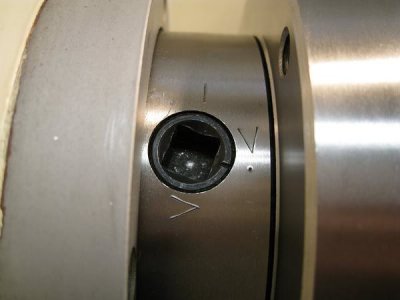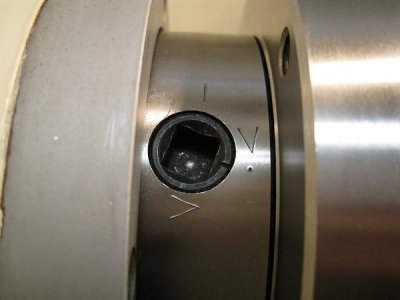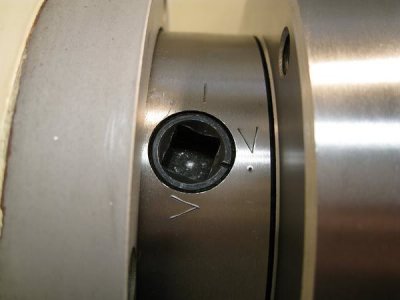Unfortunately the adjustment for the cam locks has nothing to do with chuck run out. The cam lock adjustment is simply for achieving proper lock up onto the spindle.
To adjust the cam locks: the cam lock pins normally have a reference line on them. To start, the reference line should be about flush with the spindle mating surface of the adpater (or chuck if it's a direct mount). To adjust them in out, remove the locating SHCS & screw the pin in or out to adjust height, then replace the SHCS. The pins should still be able to slightly rotate freely with the SHCS installed.
Then mount on your spindle & check lock up. You spindle should have range marks. Proper lock up is to have the cam mark fall in between the 2 range marks, in my case my range marks are arrows.

As you can see my cam mark falls in between the 2 arrows. If the cam mark does not fall inbetween the range marks, adjust the cam lock pin in or out until it does, do this for all 3 of course. Once this has been completed, your cam locks are properly adjusted.
However what you can do is install the chuck on the spindle. Use a marker or a piece of tape & put a corresponding mark on the chuck & spindle. Check run out of the chuck & note the reading. Then remove the chuck, & clock the pins to the next location, remount & check run out again. Do this for all 3 positions, which ever position gives you the lowest runout, permanently mark your spindle & chuck so you can always use that position. In my photo above you'll notice that I marked my spindle with a simple center punch. I also put the same mark on my chucks, faceplate, & drive plate.
So you may or may not get better runout than what you are measuring now. I'm not sure what chuck you have but generally high quality non adjustable 3-jaw scroll chucks aren't guaranteed to have runout lower than .002". A Chinese import chuck, .003"-.004". Some get lucky though.
And adjustable TIR scroll chuck (Set-Tru, Adjust-Tru, Setrite, etc) really is the only proper way to get very low runout but that's why these chucks cost much more. There is another way if you don't have a direct mount chuck but it's not really recommended. What you do is skim the register on the adapter so that it's slightly smaller than the register on the chuck. Then you can tap the chuck to reduce runout. But it's easier to knock the chuck out of position during heavy machining, interupted cuts, etc.
You should also check if your adapter mates to the spindle properly. The taper is important here as is having no gap between the flat faces. Some bluing will help identify this.






